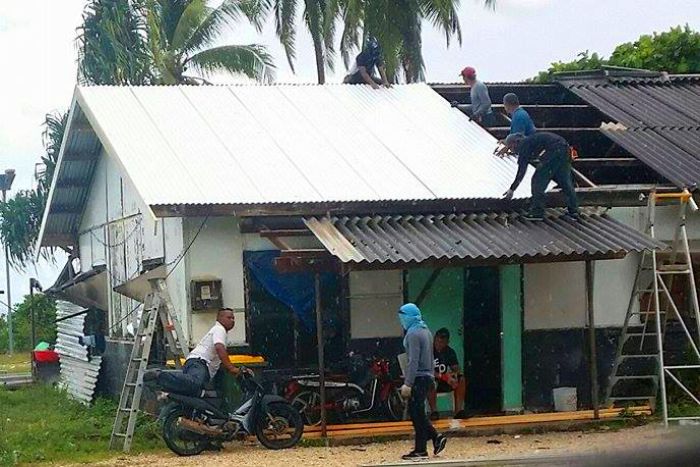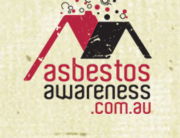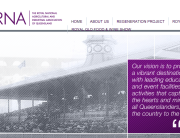Refugees and local workers on Nauru are being hired to remove asbestos from houses on the island without proper protection from the hazardous material.
The ABC has also learned the material is not being disposed of safely and could pose a future health threat.
The work is linked to a $5.5 million housing renovation scheme announced in September by the government of Nauru, which hopes to deal with the roofing and cladding of up to 41 per cent of the island’s residences, plus key facilities, that contain the deadly material.
“This program is safe and greatly beneficial to the people of Nauru,” the government said in a statement, adding: “No refugees are involved in this project.”
But a Rohingya refugee who asked to remain anonymous because of concerns he could get into trouble for speaking to foreign media said he was hired to do construction work as part of the scheme.
The refugee said his employer did not tell him he would be tasked with removing asbestos materials.
“He didn’t say anything, he told me the morning I got there ‘Hey, you take up the roofing, get on’, just like that, didn’t tell me about danger or anything,” he said.
“One month I worked there. A lot of people looked at me and said ‘Hey, you don’t do it like that because you’re not using tools, not using the gloves, not using the masks. It’s a very big problem for you and your body’.”
While the government of Nauru said the renovation program was safe, the refugee said workers were not given the appropriate safety gear and sometimes went without any protection at all.
“Sometimes they give me masks and they give me one glove. After maybe two days, three days, another one. After three days they didn’t give me anything, no gloves, no mask,” he said.
Opposition MP and former president Sprent Dabwido has seen some of the renovation work himself and said he was concerned about safety on the sites.
“Those refugees are willing to do the hard work but I don’t think they know the safety risk they’re taking by doing this job,” he said.
“They climb onto the house, they remove the asbestos with no safety equipment.”
The ABC has received photographs of a group of Nauruans and refugees attaching a new roof to a house, removing the existing deteriorated asbestos roofing.
The photographs show workers wearing their own clothes, instead of coveralls, with only hats and pieces of cloth as head protection.
Asbestos review cites existing contamination
A report from June 2015, funded by the European Union and implemented by the Secretariat of the Pacific Regional Environment Program (SPREP), found that 212,000 square metres of asbestos-laden material is on buildings on Nauru.
It found that “asbestos roofing and cladding on residential dwellings is often 60-70 years old and in bad condition”.
A risk assessment and baseline work discovered that “all asbestos is old and in various stages of deterioration”. It added that “in many cases it is in an advanced stage of deterioration” which were in danger of releasing asbestos fibres.
“Asbestos fibres in areas where people are able to breathe them in pose an ongoing and real health risk of asbestos-related diseases including debilitating conditions such as asbestosis and … mesothelioma,” it added.
While the building material tends to be relatively safe if kept in good condition, decades of poor maintenance in a tropical environment have left most roofs in poor shape.
Swab tests by EMS Laboratories of California found “significantly high” results of asbestos fibres in four locations including the maternity unit at Republic of Nauru Hospital, the port, the power plant, at two locations in the prison and in a government building.
Mr Dabwido believes little direction had been given to workers removing the asbestos.
“Even the hammering, I don’t think there’s any training because they throw the roofing off the top of the house and once it hits the ground it breaks and there’s dust everywhere,” he said.
Stewart Williams from SPREP, the organisation that recently completed the report on the asbestos hazards, said renovation work involving the removal of asbestos could be risky.
“Asbestos roofing, asbestos cladding, it’s either nailed or screwed or otherwise attached to the rafters or framework. When that’s removed it can break and fibres can be released,” he said.
“Best practice, which is endorsed at the international level, is that when workers are working on asbestos cement sheeting they have to have the appropriate personal protective equipment to stop them taking asbestos dust off the site, to stop them inhaling the asbestos dust, or even creating asbestos dust.
“They have to have coveralls, they have to have respirators, they have to have gloves. They have to have them on prior to going on-site, and they have to take them off before they leave the site.”
The photographs obtained by the ABC also show pieces of removed asbestos next to the house and directly behind workers which should be placed in sealed bags. Other photos show broken roof sheets sitting uncovered in a local tip site.
Mr Williams said there were prescribed ways of handling asbestos, with specific options for Nauru detailed in the 2015 report.
“When they are removing the material itself it must be wetted down, usually with a soapy water mix. That material should be carefully removed to try not to break it, and that should be placed in plastic or ‘haz-bags’ and secured, wrapped up, so that it can’t release asbestos fibres,” he said.
“It’s contrary to best practice if people are doing any removal activities, transport activities or disposal not following those requirements.”
The June 2015 report also found that asbestos was currently dumped at the local tip, along with all other refuse.
“Scavenging of all refuse is common, including asbestos,” it said.
There is little epidemiological evidence to indicate that asbestosis and mesothelioma have developed in Nauru’s population after living in close proximity with the material for decades as “health records are not detailed and were partly lost in the 2013 fire at the hospital”.
In its statement to the ABC, the Nauru government did not give specific details about safety precautions on the worksites, nor how the removed asbestos was being disposed of.
“We’d suggest you don’t rely in social media for your facts,” it said, adding: “Any claims that this program is unsafe are false and more typical nonsense from the ABC.”
The report estimates that it will cost about $24 million to remove asbestos from Nauru, a cost which does not include cleaning-up its contaminated sites.
This article was taken directly from www.abc.net.au. You can read the full article here:
http://www.abc.net.au/news/2015-11-30/refugees-removing-nauru-asbestos-without-proper-protection/6985292





